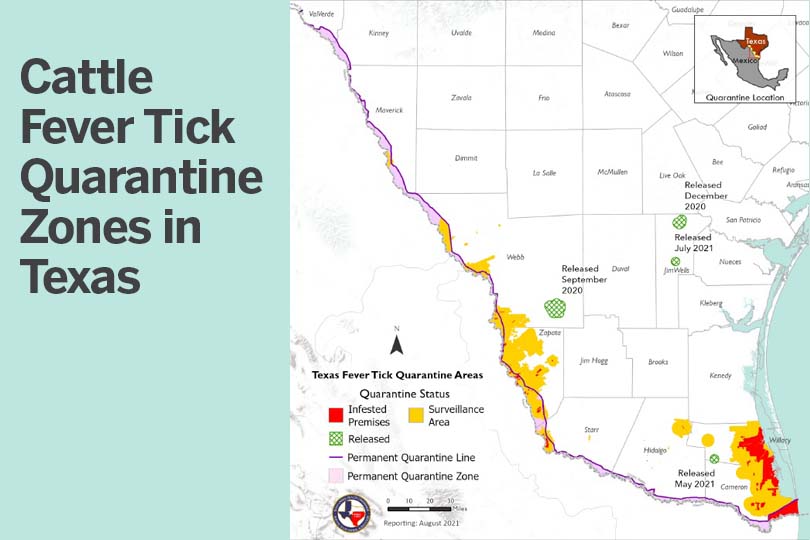By Jessica Domel
Multimedia Reporter
The Texas Animal Health Commission (TAHC) is asking people who plan to hunt in the Lower Rio Grande Valley to help prevent the spread of cattle fever ticks.
“We are asking for hunters’ help to ensure fever ticks are not inadvertently transported to unaffected areas of the state when harvesting deer or exotics from fever tick-infested areas,” Dr. Andy Schwartz, TAHC state veterinarian and executive director, said. “Hunters can play a critical role in protecting the state from the further spread of fever ticks.”
TAHC wants hunters to contact one of their inspectors, or an inspector from the U.S. Department of Agriculture, to test their white-tailed deer, nilgai, antelope, black buck, axis deer or other exotic cervids before leaving the place they bagged it.
“We call it a scratch inspection. They will feel around, especially under the armpit area and in the ears, looking for ticks,” Dr. Angela Lackie, TAHC assistant executive director of Animal Health Programs, said. “If ticks are found, we’re going to harvest those so we can identify what type of tick they are.”
The inspector then treats the carcass or hide for ticks to prevent transporting them to an unaffected area.
“Cattle fever ticks are very specific for cattle, and because nilgai antelope are also in the Bovidae family, cattle fever ticks seem to like them, as well,” Lackie told the Texas Farm Bureau Radio Network. “They will also go on our cervids.”
If a hide is not checked, a hunter may inadvertently take the ticks from a quarantined area in the Lower Rio Grande Valley and infect a new area.
That could be detrimental to the cattle industry.
“Cattle fever ticks spread babesia, which is a lot like an anaplasmosis type of disease. It affects the red blood cells. Animals will no longer thrive and can die very suddenly,” she said.
Cattle in other parts of the state and nation don’t have a resistance to babesia.
“We could see 100% mortality rates in areas where the babesia is being spread,” she said. “It could have a huge economic impact from not only the mortality of animals, but also from the loss of markets and marketability of cattle in the U.S.”
Hunters are encouraged to have deer tested before leaving the location where it was bagged, even if the property does not have cattle on it.
“In the past, a lot of our pasture lands had cattle on them, and we were able to gather the cattle every 21 to 28 days, scratch for cattle fever ticks, and then treat them,” Lackie said. “Now, we’re seeing more premises that don’t have any livestock, and it’s primarily just our wildlife.”
She said they’re relying on hunters to be the first line of defense in areas where there might be fever ticks, but there aren’t any cattle.
“Their cooperation could help us really understand better, on some of our vacated premises, whether or not we’ve got cattle fever ticks in those areas,” Lackie said.
There are cattle fever tick quarantine and surveillance areas in portions of the following counties: Cameron, Hidalgo, Maverick, Starr, Webb, Willacy and Zapata.
A list of inspectors hunters may contact for testing is available on tahc.texas.gov.

